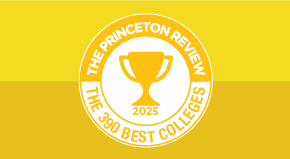
When parents and schools collaborate closely, students flourish in various aspects of their education. Research has consistently shown that active parental involvement leads to improved academic performance, enhanced social skills, increased attendance, and fewer behavioral issues in the classroom.
Recognizing the Value of Effective Communication
Teachers frequently stress the significance of robust communication between parents and educators. A survey conducted in 2006 among K–12 public school teachers revealed that half of them were concerned about insufficient parental engagement in their children's education. Additionally, nearly half reported that parents had a limited understanding of the curriculum. A study from 2016 further identified challenges such as transportation issues, conflicting work schedules, language barriers, and fundraising pressures that hinder productive communication.
Setting a Strong Foundation at the Start
Laying the groundwork for productive parent-teacher interactions is vital right from the beginning of the school year. Educators offer several practices to initiate effective communication:
Flexible Contact Methods: Teachers inquire about parents' preferred modes of communication using tools like Google Forms, introductory calls, or emails. Identifying languages spoken at home is also important for effective communication.
Personalized Introductions: In situations where in-person meetings aren't feasible, teachers can send brief introductory videos via email. This approach helps teachers connect with parents virtually and establish classroom expectations.
Understanding Your Child: Teachers may distribute surveys that encourage parents to share insights about their child's learning attitude, motivations, and feelings about the school year. This assists teachers in understanding each student's distinct needs.
Home Visits: Some schools facilitate teachers visiting families' homes at the beginning of the year. This practice allows educators to learn about family strengths and educational goals.
Sustaining Two-Way Communication
For effective communication, both parents and teachers must exchange information freely. This fosters a healthy exchange of ideas and encourages parents to become partners in their child's education. Consider these strategies:
Regular Updates: Teachers should provide consistent updates on students' progress and participation in lessons. Sharing positive news is especially important for building trust with families who are new immigrants.
Social Media Engagement: Teachers sometimes create classroom Instagram or Twitter accounts to showcase student work. Monthly blogs can celebrate achievements and give parents insight into upcoming lessons.
Real-Time Tech Tools: Platforms like Seesaw or ClassDojo enable students to share their learning with parents in real time. This fosters a strong connection between the classroom and home.
Text Reminders: Sending text reminders about assignments and important dates helps parents stay engaged in their child's learning, boosting attendance and reducing failures.
Transparency in Curriculum: Sharing lesson plans and assignments online helps parents understand their child's learning and encourages collaborative engagement.
Reaching Every Parent
To ensure that all families are engaged, educators need to address potential obstacles and adapt their communication strategies accordingly.
Broadening Participation: Engagement comes in various forms, and schools should acknowledge the diverse ways parents can contribute beyond traditional roles.
Inclusive Calendar: A school calendar that respects diverse holidays and traditions prevents events from conflicting with important family observances.
Empowering Parents for Student Success
Everyone involved benefits from effective communication between parents and schools. In order for parents to properly support their children's education, schools are crucial. Parents and educators may work together for a better future for every student by building strong bonds and transparent communication. A student's educational path and future achievement are substantially influenced by the coordinated efforts of parents and instructors.
Sources:
Explore Colleges For You
Connect with our featured colleges to find schools that both match your interests and are looking for students like you.
Get Started on Athletic Scholarships & Recruiting!
Join athletes who were discovered, recruited & often received scholarships after connecting with NCSA's 42,000 strong network of coaches.
Best 390 Colleges
168,000 students rate everything from their professors to their campus social scene.
Explore Colleges For You
Connect with our featured colleges to find schools that both match your interests and are looking for students like you.
Get Started on Athletic Scholarships & Recruiting!
Join athletes who were discovered, recruited & often received scholarships after connecting with NCSA's 42,000 strong network of coaches.
Best 390 Colleges
168,000 students rate everything from their professors to their campus social scene.
Explore Colleges For You
Connect with our featured colleges to find schools that both match your interests and are looking for students like you.
Get Started on Athletic Scholarships & Recruiting!
Join athletes who were discovered, recruited & often received scholarships after connecting with NCSA's 42,000 strong network of coaches.
Best 390 Colleges
168,000 students rate everything from their professors to their campus social scene.



